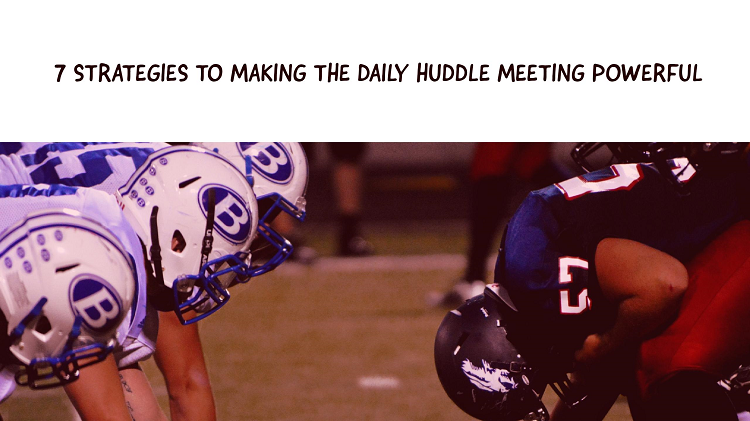Meetings…. Do they really need to be done?
Meetings can be a drain. It is rare when you hear people joyfully talk about the meetings they need to attend. Usually, discussions around meetings are more complaints about how unproductive they are. A waste of time. You especially don’t want to add a daily huddle.
Despite the frustration sometimes felt about meetings, if done right, the Daily Huddle can not only improve the team environment but boost productivity. They are a great medium for keeping team members informed of important information and for holding people accountable for results.
Sports teams do it all the time. Huddles are done at the beginning of a game or during half time. Quarterbacks even do it several times in a game. They can be a great way to align and keep energy levels high.
The key to the daily huddle is in the setup and process. The key is in the strategy.
Here are 7 Key Strategies to Making the Daily Huddle Powerful
Establish the Routine
The Daily Huddle should be done at the same time every day. This allows for proper planning for everyone involved.
Strategize and Establish the Process
The average length of the daily huddle should be between 5-10 minutes, but they still need proper planning. By establishing a process, employees can prepare and increase participation.
Recognition
Share good news or great practices that resulted in success. Ideally, these should come from participants. What do they want to share?
Review the Numbers
It is important to review key metrics. Let me emphasize the “Key metrics”. Companies sometimes measure everything. What should be emphasized are the 2-3 sub-metrics that will impact the overall metric.
Example of a metric for a retail store:
Overall metric: Top line Revenue
Some Sub-metrics that can be reviewed during a huddle
- Conversion
- Average Sale
- CRM
State the Focus and Goals for the Day
What are the main objectives for the Group? This can also be broken down by division. What are they working on?
Identify
What is working or not working well? The daily huddle is not the place to solve problems but can be a great way to identify obstacles and leverage the experience of team members to help find solutions after the meeting.
Evolve over Time
Teams can have different dynamics. See what is working during your huddle and what needs to be improved. Gather feedback from your members on what can be done to improve the huddle.
I have seen powerful huddles or huddles that left the participants feel like it is a waste of time. The agenda can be dynamic until you find the right fit for your team.
Give it a try and let me know what works best.

